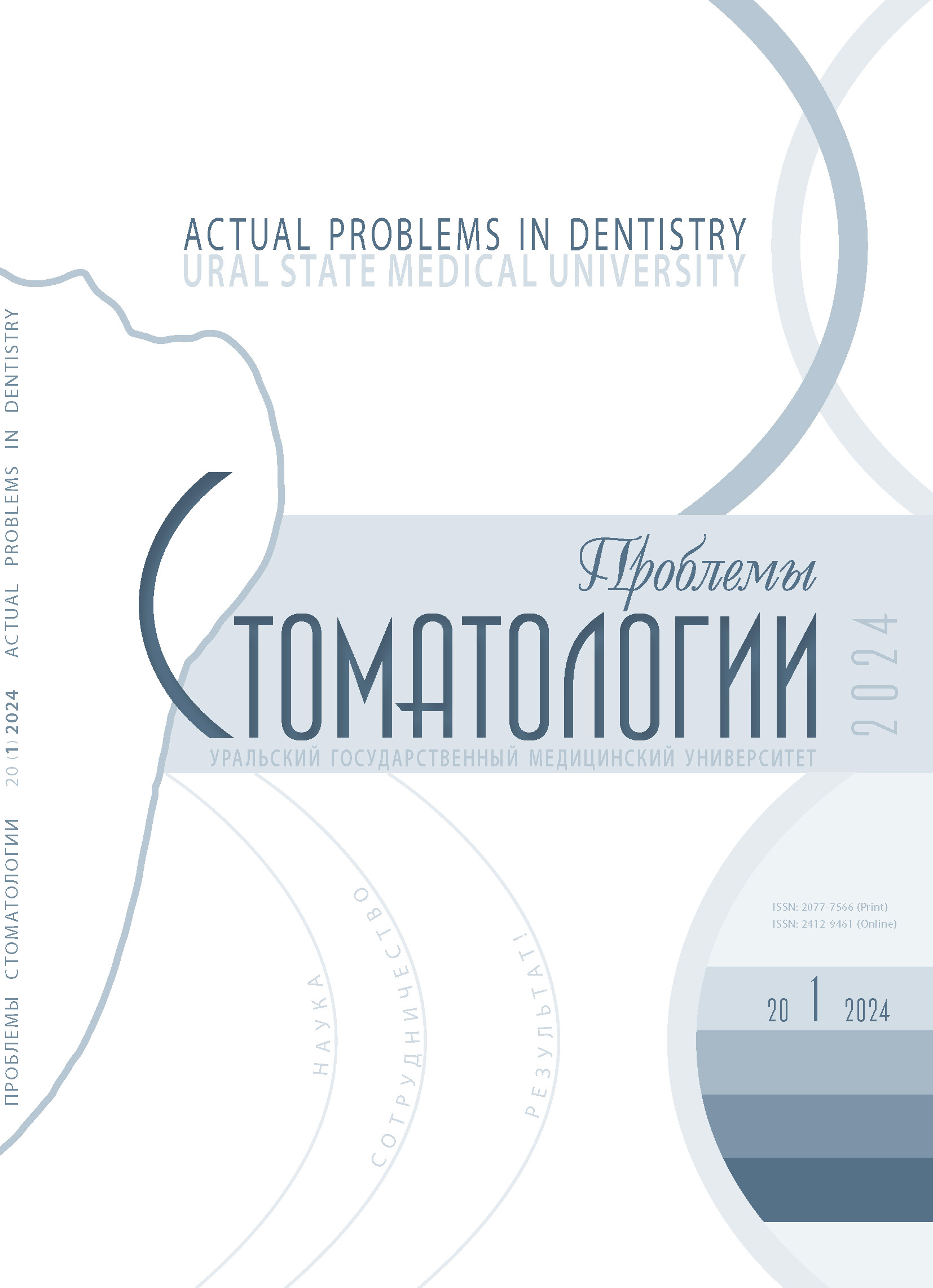Volgograd, Russian Federation
Volgograd, Volgograd, Russian Federation
Volgograd, Vologda, Russian Federation
UDC 616.31
CSCSTI 76.29
Background. As a result of teeth loss, a complex of factors arises that leads to changes in the dental system and impaired speech of the patient. Speech is an important communicative function, and assessing its intelligibility allows us to evaluate the result of prosthetic treatment. It is necessary to ensure unimpeded movement of the tongue, lips, cheeks and to fill in the missing components of the sound-producing system to restore phonetics. The optimal method of restoring complete absence of teeth is treatment with complete removable plate dentures made of acrylic plastics. Adaptation to this design over time restores the functions of sound pronunciation and the digestive system. The adaptation process depends not only on the patient’s abilities, but also on the quality of the manufactured structure. The discrepancy between the prosthetic bed and the base of the orthopedic structure is manifested by a violation of fixation and stabilization, which leads to pain. Aim. To evaluate the dynamics of the phonetic adaptation process of patients after the application of a complete removable prosthesis. Materials and methods. Application of phonetic control according to W. Wright and logopedic exercise “Drawing”. Results. During the study, the results were obtained that patients of groups II, III and IV improved their initial indicators, while group III increased their indicators by 25%. On average, the groups that followed the recommendations improved their results by 19.4%. Conclusions. According to the results obtained, the exercises used help patients with removable plate prostheses to adapt to them faster and accelerate the restoration of sound reproduction.
complete removable plate prosthesis, speech, phonetic adaptation in the complete absence of teeth, phonetic control, orthopedic dentistry
1. E.G. Tatsenko. Prediction of patients' adaptation to removable dental constructions. International Journal of Applied and Basic Research. 2014;2(1):182-188. (In Russ.)
2. K.A. Ershov. Assessment of adaptation to removable dentures in elderly patients. Science of the Young. 2017;5(4):469-476. (In Russ.)
3. V.Yu. Kurlyandsky. Clasp dental prosthetics. Tashkent: Medicine. 1965:219. (In Russ.)
4. I.Sh. Kotlyakhmetov. Phonetic adaptation of the patient after dental orthopedic treatment. Current issues in dentistry: Collection of scientific papers dedicated to the founder of the Department of Orthopedic Dentistry of KSMU Professor Isaac Mikhailovich Oksman. 2018:97-200. (In Russ.)
5. K.A. Koshelev. Determination of the restoration of phonetic function as an element of assessing the quality of life after dental orthopedic treatment. Bulletin of the medical institute "REAVIZ": rehabilitation, doctor and health. 2015;4(20):22-25. (In Russ.)
6. N.V. Ionova. The phenomenon of phonetic adaptation of patients to orthopedic structures. Dentistry - science and practice, development prospects: Materials of the Anniversary scientific and practical conference dedicated to the 55th anniversary of the Faculty of Dentistry of Volgograd State Medical University. 2017:148-151. (In Russ.)
7. A.V. Mashkov, V.I. Shemonaev, A.V. Lashakova, S.M. Gatsenko. Phonetic and aesthetic aspects of orthopedic treatment of dental patients. Volgograd State Medical University. 2022:84. (In Russ.)
8. N.V. Ionova. Phonetic adaptation of patients to orthopedic structures. International Student Scientific Bulletin. 2016;2:33. (In Russ.)
9. K.A Koshelev. Assessment of the restoration of speech function after orthopedic treatment of patients with tooth loss. - Tver, 2016:22 p. (In Russ.)
10. A.S. Gavrilova. Speech therapy games. - Moscow: M.: LLC IKTC LADA. 2010:168. (In Russ.)
11. V.M. Larionov. Phonetic aspects of prosthetics with bridges of the anterior part of the upper jaw. - Moscow, 2004:17 p. (In Russ.)



















